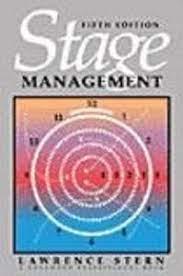Question
Founder David Neeleman launched JetBlue Airways in 2000, flying out of New York.7 When JetBlue first got its start, many experts were skeptical. It was
Founder David Neeleman launched JetBlue Airways in 2000, flying out of New York.7 When JetBlue first got its start, many experts were skeptical. It was a market of cutthroat pricing, but founder David Neeleman was undeterred. Neeleman had already started several companies; sold his first regional airline, Morris Air, to Southwest Airlines in 1993; and helped launch a second successful airline in Canada. While other airlines generally offer either low price/low service or higher price/ somewhat higher service, Neeleman determined to take a rather unusual and risky approach to establishing value and to create JetBlue as a low-priced/high[1]service airline. It provides value.
Since Neeleman knew he couldn't compete with traditional airlines on all service dimensions, he decided to concentrate on those aspects of airline service that customers desired most and had not yet found in the marketplace: low prices but with a focus on comfort and customer satisfaction. According to Neeleman, "They said we'd never find quality employees, that no one would want to fly domestically from New York's JFK, and that we'd never be able to offer both low fares and a product that includes new planes, leather seats, and live satellite TV with DirecTV programming." In just a few years though, JetBlue grew from one route (New York's JFK to Ft. Lauderdale, Florida) to servicing more than 30 cities.
On average, JetBlue planes fly with 83.2 percent capacity, the highest load factor (percentage of seats filled) of any major U.S. carrier. JetBlue's value proposition of low prices and high service thus appears to have proven very successful. JetBlue offers its everyday low fares using a simple four-tiered structure, determined according to the number of days (14, 7, 3, or, for walk-up customers, 0) in advance customers purchase their tickets. A customer who walks up to the airport counter to purchase a ticket to fly the same day will pay twice as much as one who purchases a ticket 14 days in advance. Unlike other carriers, which generally require at least a one-night stay for fliers to receive lower fares, all JetBlue's tickets are one-way. Tickets can be changed for a $25 fee or $20 if the change occurs via the company's Web site. JetBlue historically has beat competitor pricing by up to 40 percent for advance ticket purchases and 70 percent for walk-up tickets. Part of the reason it is able to price its flights so far below the rest of the market is its low-cost structure and concentration on efficiency. The Internet, its largest selling channel, accounts for more than 75 percent of sales. This history has given JetBlue a great deal of confidence in its operations and pricing structure; the company plans to expand its fleet to more than 430 planes by 2015. A formidable force, JetBlue has found a way to be profitable and successful in an industry.
Make a summary analysis, what services does JetBlue offer? (1)
Please list at least 3 points of marketing implementations that made JetBlue standout in a very competitive industry. (2') Be advised that marketing terms are required to include in your case analysis.
Step by Step Solution
There are 3 Steps involved in it
Step: 1

Get Instant Access to Expert-Tailored Solutions
See step-by-step solutions with expert insights and AI powered tools for academic success
Step: 2

Step: 3

Ace Your Homework with AI
Get the answers you need in no time with our AI-driven, step-by-step assistance
Get Started


